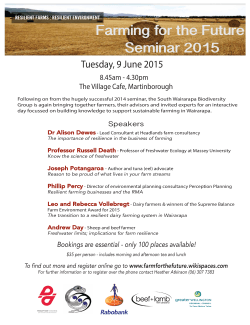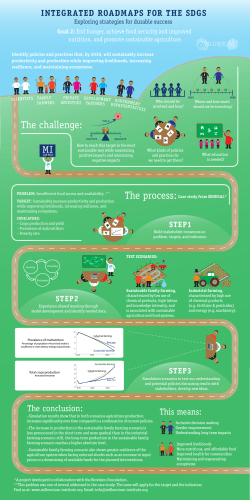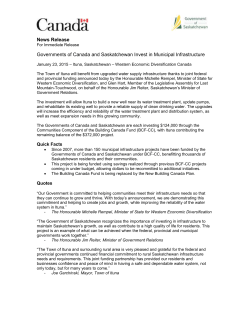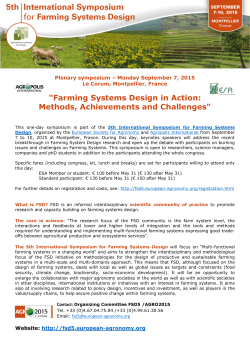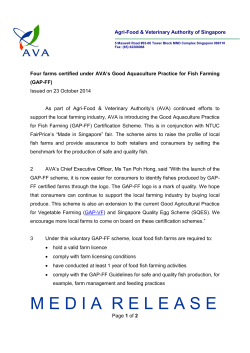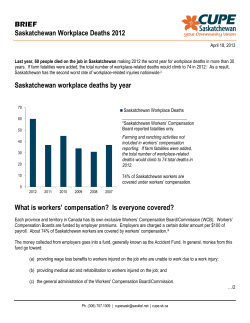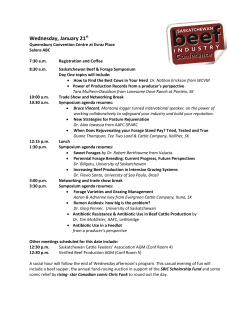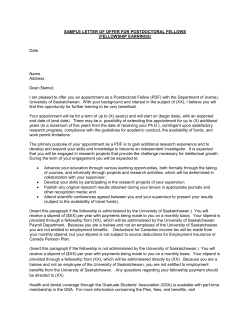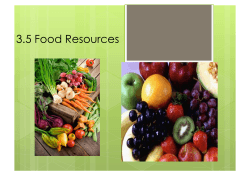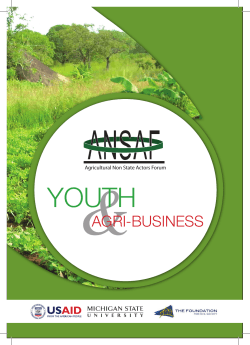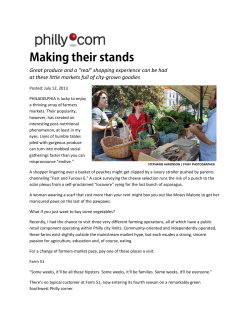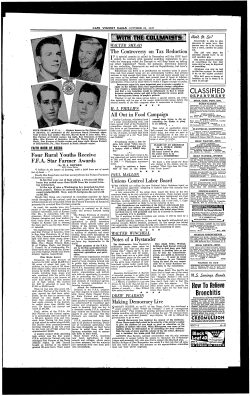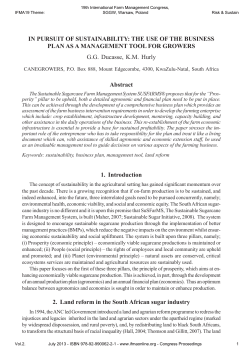
What is farming? Lesson 1 Agriculture in the Classroom
Presented by Lesson 1 Agriculture in the Classroom What is farming? In this lesson students will explore a definition of farming and begin to determine why farming is important to them. Outcome: RW4.2 Investigate the importance of agriculture to the economy and culture of Saskatchewan. About 45 minutes Indicators: RW4.2 a. Identify and locate various types of farms in Saskatchewan. RW4.2 e. Identify agricultural products used in daily life in Saskatchewan. Questions/Statements to Guide Inquiry: 1. What is agriculture? 2. Agriculture is important to all of us whether we live on a farm or not. MATERIALS NEEDED: * white board or Teacher Background chart paper One definition of farming is the process of producing food, feed, and fibre by cultivation of certain plants and the raising of livestock (domesticated animals). * paper for student brainstorming Your school may in the middle of an active farming community where the majority of students live on farms and have considerable knowledge already. Start wherever your students are and build from there. Or, your school may be located in a thoroughly urban setting where knowledge about agriculture and farming is very limited. Again, use whatever knowledge students have and proceed from that point. Don’t be afraid to say, “I am not sure, let’s look that up” and be willing to share your own experiences. For information on the Think/Pair/Share strategy or the Graphic Organizer strategy see: http://olc.spsd.sk.ca/de/pd/instr/alpha.html e Farming was once th arly main way of life in ne every country . People od, cannot live without fo comes & much of our food from crops & animals raised on farms! Agriculture: The Heart of Saskatchewan’s Past, Present, and Future 28 Presented by Lesson 1 Agriculture in the Classroom Before Activity If your school is in a rural setting you could ask students the question (or one similar): “We are going to explore something that affects each of you and your families every single day and is also a very important part of life in Saskatchewan. Write down in your notebook what you think it could possibly be.” (Indicate it’s not the Saskatchewan Roughriders). Pause, and then ask how many thought it could be ‘farming’ or ‘agriculture’. If your school is urban you might ask students to indicate how many have lived on a Saskatchewan farm. Have them indicate how many have visited a Saskatchewan farm. Ask what types of farms are there in this province. Inform students they will be exploring why agriculture and farming have such an influence on this province. the Saskatchewan has Canada! biggest farms in of the This is the result base & large arable land ctors of agro-climatic fa ger farm which require lar farms units for viable operations. During Activity Conduct a think/pair/share with students. Pose the question “What is Farming?”. Give each student time to write down his/her ideas of what farming is using a graphic organizer such as a brainstorming web. What is Farming? Next, pair each student and have students share their ideas with each other adding to each other’s brainstorming webs. The entire class will share ideas as a group. Record ideas on a white board or chart paper as they are shared. Have them explain the reasoning behind adding certain items to the web. You may need to guide them in the right direction by asking questions like: What about the foods you eat? What about the clothes you wear? After Activity Instruct students to keep their webs adding to them as they extend their understanding of farming and agriculture. Have students consider the following questions. ǷǷ What is your definition of farming? ǷǷ Why is farming important to everyone in the province? Have them reflect on the questions in their journals. Agriculture: The Heart of Saskatchewan’s Past, Present, and Future 29 Lesson 1 Presented by Agriculture in the Classroom Assessment Teacher Checklist √√ Did student successfully complete brainstorming web? √√ Did student share ideas with partner and in whole group? √√ Was student able to provide a sound definition of farming and a rational explanation of its importance? Lesson Resources All About Food: Agri-Food Facts booklet is a resource which captures many of the interesting, surprising, and useful facts about this important system. The agri-food system touches everyone’s life on a daily basis. This booklet is educational, fun, colourful, and free. It can be ordered through Agriculture in the Classroom at www.aitc.sk.ca. A teacher’s guide is also available. ing re produc Farmers a me on the sa more food 1960 land. In amount of , 456 roduced 4 one cow p chicken and one L of milk 006 one ggs. In 2 e 3 19 ve a g L of ced 9, 419 cow produ n gave one chicke milk and 300 eggs! This Manitoba site for children shows agriculture involved in the home, school, and around town. Did you know the airbag in your car contains cornstarch? That suntan lotion has canola oil? www.gov.mb.ca/ agriculture and go to the 4 kids section. Cross Curricular Connections and Further Investigation ELA Start a word wall of vocabulary dealing with Saskatchewan agriculture. Possibly start with the word ‘diversity’ as it is central to the next lesson. Students may want to test their agricultural IQ after this lesson with the Where’s Agriculture game found online at www.gov.mb.ca/agriculture/wheresagr or on the AITC website. The activity “What is the source?” found on www.aitc.sk.ca is an excellent activity to help students understand how many products begin on the farm. Food Freedom Day in Canada in 20 1 1 was Febru ary 12 ! This mean s the averag e Canadian has earned enough mon ey to pay for the whole ye ar’s grocery bills! How do you think this compare s to other countries? Agriculture: The Heart of Saskatchewan’s Past, Present, and Future 30
© Copyright 2025
